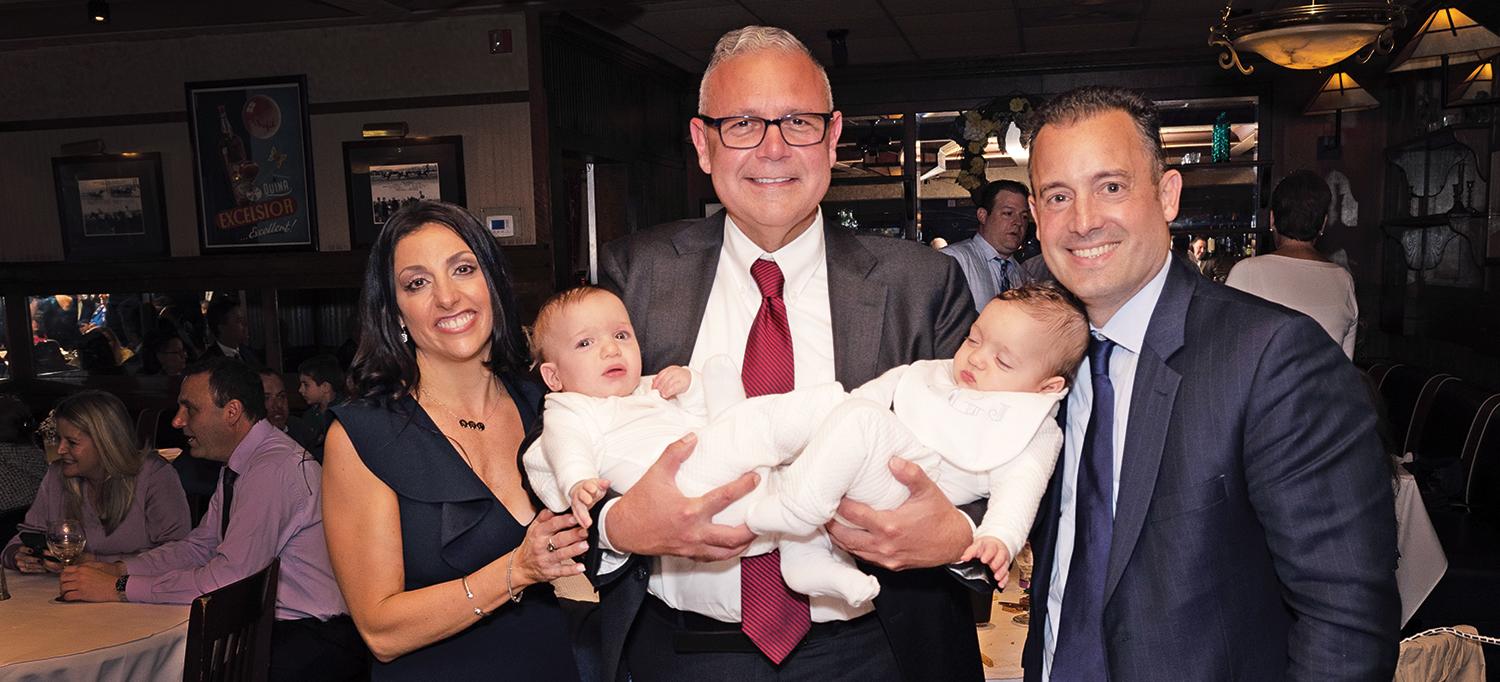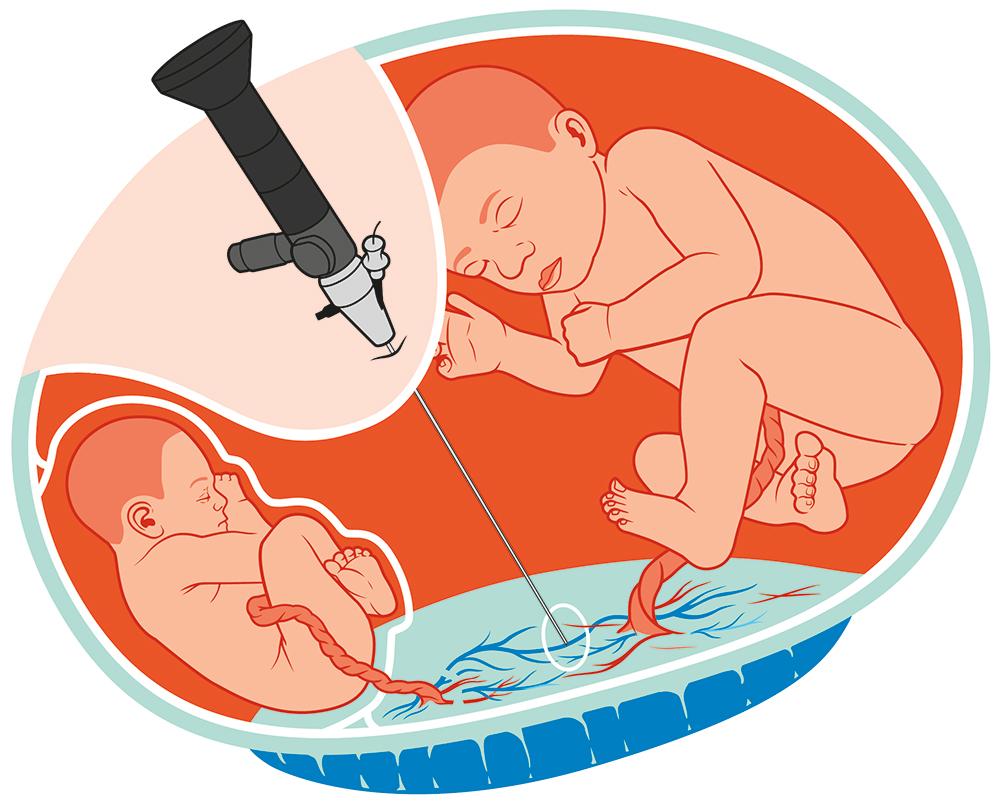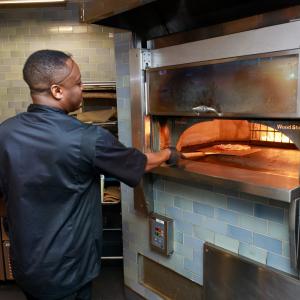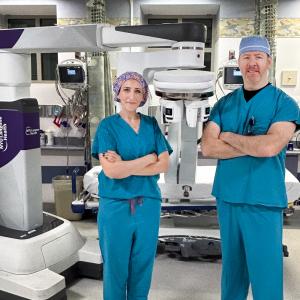
Martin Chavez, MD, with Nicole and Matthew Giannone, and their healthy twin boys.
Photo: Peter D’Angelo
Even after five years of unsuccessful fertility treatments, Nicole and Matthew Giannone still dreamed of having a baby, but they were cautiously optimistic. “We didn’t want to get our hopes up,” says Nicole, 40, an office manager who lives in Wantagh, Long Island. So when the couple learned in January 2018 that Nicole was pregnant with twins, they were ecstatic. “After all that we had been through,” she says, “we just cried.”
In May, while Nicole and her husband were in Florida for her brother’s wedding, she started to feel bloated and exhausted, with severe back pain. “Since this was my first pregnancy, I really didn’t know what to expect,” she recalls. “So I didn’t think anything of it.” Several days later, during her 20th week, Nicole visited her gynecologist at NYU Winthrop Hospital, Salvatore Lopresti, DO, for a sonogram, which was scheduled every two weeks because she was carrying twins. The scan revealed that one fetus was hidden behind the other and could not be seen moving. Concerned, Dr. Lopresti referred the couple to Martin Chavez, MD, director of maternal and fetal medicine and fetal surgery at NYU Winthrop Hospital.
A decade ago, Dr. Chavez launched the hospital’s fetal surgery program—the only one on Long Island—to enable high-risk pregnancies to progress to later stages, giving fetuses a better chance to survive. “Dr. Chavez brings a rare expertise in fetal laser procedures,” notes Ashley S. Roman, MD, the Silverman Associate Professor of Obstetrics and Gynecology and director of the Division of Maternal–Fetal Medicine at NYU Langone Health. “Now that his skills are available at our main campus in Manhattan for certain complicated cases, there’s no type of high-risk pregnancy we can’t handle.”
When Dr. Chavez met with Nicole, his own sonogram confirmed what Dr. Lopresti had suspected: twin–twin transfusion syndrome, a rare disease of the placenta in which blood flows unevenly from the shared organ to the two developing fetuses. In Nicole’s case, one fetus was receiving too much blood while the other was receiving too little. “If we didn’t intervene,” says Dr. Chavez, “Nicole would have lost one or both of her babies.”
Dr. Chavez laid out several options, but for the Giannones, there was really only one. “We wanted to save both babies,” says Nicole. On May 29, Dr. Chavez set out to correct the imbalance with a procedure he has helped to refine: laser photocoagulation. This minimally invasive surgery, performed in utero, can not only extend a pregnancy to a safer stage for delivery, but also preserve pregnancies that might not otherwise survive—all while minimizing risk to the mother. “Ten years ago, a safe surgical option didn’t exist on Long Island,” notes Dr. Chavez. “Now, I’m no longer just a bystander.”
With Nicole anesthetized but awake so that she could hold her breath at critical moments, Dr. Chavez made a small incision just above her navel and, guided by ultrasound, inserted a pencil-thin fiber-optic scope into the amniotic cavity of the overnourished twin. Examining the blood vessels on the surface of the placenta, he identified the abnormal vascular connections, then sealed them off with a laser, restoring balanced circulation.
The procedure went smoothly, and the blood flow equalized, but several weeks later, another imbalance occurred. When large vessels are sealed off, smaller ones try to compensate. In this case, some of them overcompensated. So on July 6, at 26 weeks, Dr. Chavez performed another laser procedure to once again balance out the circulation between the fetuses. “At 26 weeks, at least there was a chance that if delivery became necessary, the babies could survive,” he says.
Nicole was admitted to NYU Winthrop Hospital for a cesarean delivery six weeks later. Her sons, Christian and Nicholas, weighed 3 pounds 10 ounces and 2 pounds 14 ounces, respectively. Nicole doesn’t remember hearing their first cries, but she does recall holding the babies for the first time. “Are these really mine?” she said. Christian stayed in the neonatal intensive care unit for 21 days; Nicholas went home 7 days later. Now nearly a year and a half old, they’re meeting all their milestones and are expected to be the same size by age 2.
“The probability was that we were not going to have these children,” says Matthew Giannone, “so we feel blessed.” Nicole adds that her gratitude to Dr. Chavez is hard to put into words. “He is the most amazing doctor,” she says. “He made us feel comfortable putting the lives of our babies in his hands.”
At the twins’ first birthday party, Dr. Chavez was the guest of honor. “I needed to celebrate this very special moment with the boys,” he says. “I was a part of their journey, and I got to meet them—twice—before they were even born.”


